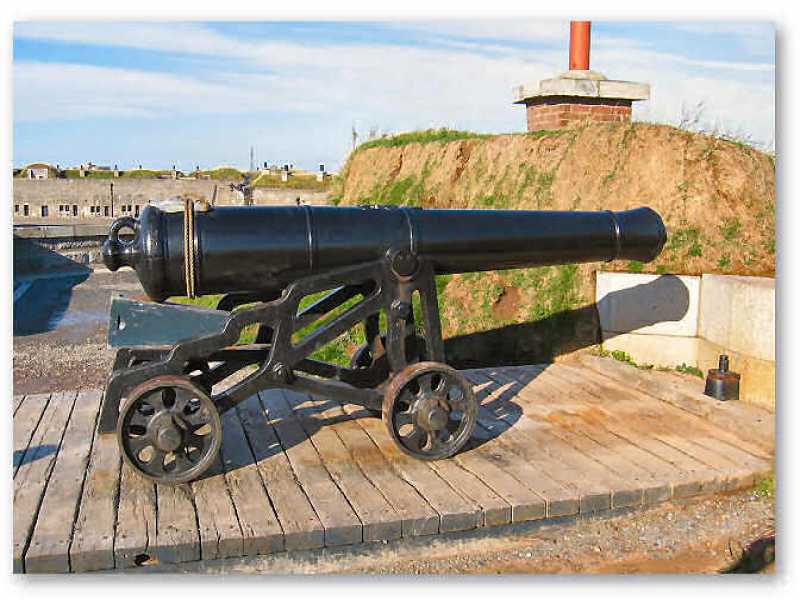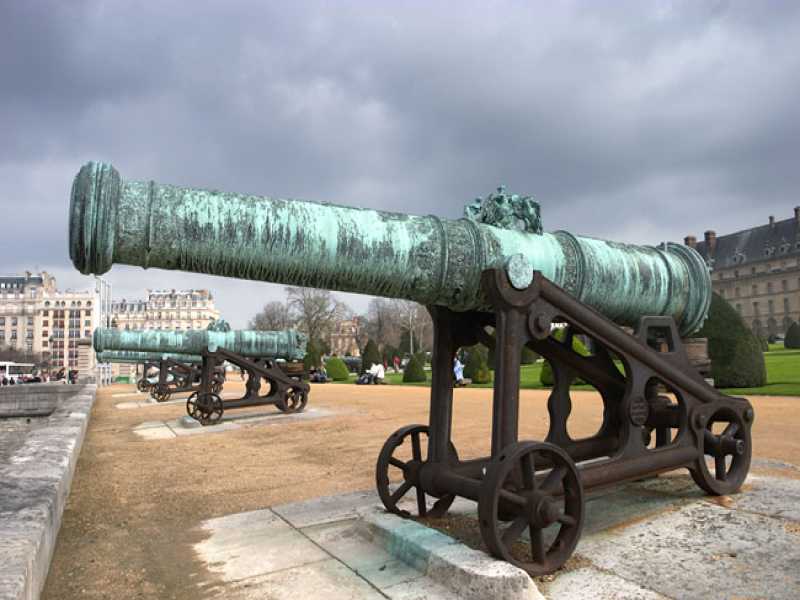This is basically just a reiteration of Adrian's post, but I think that it's also true that quite a few of the examples of this type of iron garrison carriage that we now see dislpayed are contemporary reproductions that were chosen for aesthetic reasons coupled with their being less costly than some other choices, even though they sometimes don't match the time period of the guns mounted on them.
http://samilitaryhistory.org/vol036dh.html"As will be described shortly, our gun came ashore in Natal after its naval service. This explains the iron garrison carriage on which it stands. Guns of the period were mounted on field, siege or garrison carriages. These latter, being made of cast iron, were liable to shatter if hit by enemy fire, so they were not used in action. For every iron garrison carriage, a wooden carriage was also issued, and these wooden carriages were used in the event of war. The wood used was elm, which did not splinter if hit. Ships’ guns were normally on wooden carriages.
The use of wooden carriages for land service in wartime is shown in illustrations of the war in the Crimea. There are several good prints of muzzle loaders on these carriages in action during the siege of Sebastopol.
Wheels less than 20 inches (51 cm) were called trucks. The Pietermaritzburg gun is on iron trucks. Ships’ guns were on wooden trucks. These avoided damage to the decks, they were lighter, and they were easier to repair.
The weight of this carriage is inscribed on it thus, ‘16-2--0’, which signifies 16 cwt 2 qtrs 0 lbs (838 kg). The equivalent wooden carriage weighed 11.5 cwt (584 kg). Disadvantages of these heavy iron carriages were the difficulty in elevating and traversing, and the difficulty of repair.
‘No 21’ may refer to the type, or the serial number of the carriage. The designation ‘12 pr’ appears on the side frame, and also on the transom (joining the two sides). The arrow denoting Government ownership also appears on the transom beneath the breech.
Note that there are no cap squares holding the trunnions in place. They rest in deep housings, and the weight of the gun made it impossible for it to jump out on being fired. A 12-pounder smooth bore should not be compared directly with a 12-pounder breech loader, but nevertheless it is interesting to note that this smooth bore weighs 32 cwt (1 626 kg), compared with the Boer War Royal Horse Artillery’s breech loader which weighed 6 cwt.(305 kg)".

The photo above is of the Halifax, Nova Scotia 'Noon Day Gun', but it would be very similar (it is a British Blomefield pattern cannon) to the gun and carriage described in the South African Military Historical Journal.

Cannons along the Seine in Paris, France.